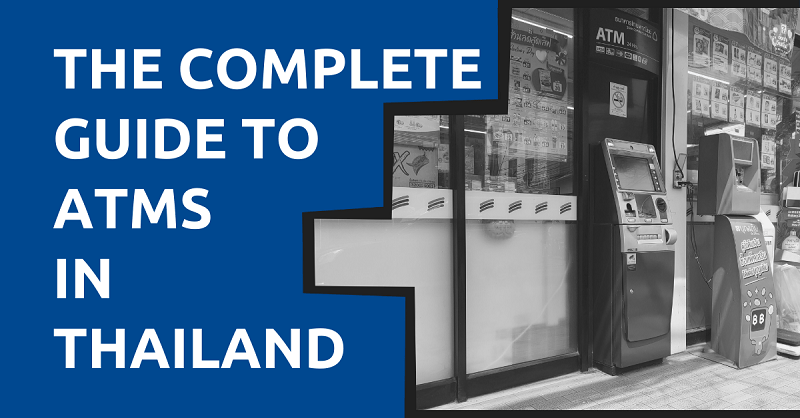
Using your home country ATM card in Thailand is the same as using your card at home.
However, you have to be mindful of certain fees that you wouldn’t usually have to pay for in your home country, such as international withdrawal fees and inflated exchange rate fees.
Having said that, this guide to ATMs in Thailand will show you which cards are accepted in the country, where to find ATMs and how to use them, and how to lessen the amount of fees you’ll have to pay. Moreover, if you need help with your Thai ATM card, there’s a section for you as well.
Let’s jump into it.
"*" indicates required fields
Disclaimer: This article may include links to products or services offered by ExpatDen’s partners, which give us commissions when you click on them. Although this may influence how they appear in the text, we only recommend solutions that we would use in your situation. Read more in our Advertising Disclosure.
Contents
Which ATM Cards are Accepted in Thailand?
You can use a variety of cards at ATMs in Thailand, just make sure the ATM has the logo of your card somewhere on the machine.
Having said that, the following cards are accepted at most ATMs in Thailand.
- American Express
- Visa and Visa Electron
- Cirrus
- Union Pay
- MasterCard
- Visa Electron
- JCB
- Maestro
- ATM Pool
- Plus
- AEON
- MEPS
- UMAY+
If you have a Global Alliance card, you’re out of luck. They’re not accepted at Thailand ATMs.
You may run into trouble even if you try to use one the cards above. Sometimes, foreign ATM cards are rejected by the machine because of a temporary glitch.
However, there are a wide variety of ATMS available in the country so this shouldn’t be a major concern. Just make a mental note not to use that particular ATM, and move along to another one.
Which ATMs Can You Use?
It’s easy to find ATMs in the country. In fact, for every 100,000 people in Thailand, there are 115 ATMs.
To put it simply, you can find ATMs in every part of Thailand. They are usually located in front of convenience stores.
Expats and locals alike usually refer to them by color. For example, green is synonymous with Kasikorn Bank; blue with Bangkok Bank; purple with SCB; light blue with TTB; pink with GSB; and so on.
If you have an ATM card from your home country, you can use any ATM from any bank in Thailand as long as it accepts your card, which you check by looking for the card’s logo on the machine as mentioned above.
How to Withdraw Money Using an ATM in Thailand
Using an ATM in Thailand is just like using one in your home country, with a few minor differences.
The biggest difference may be the order in which your card is released back to you. In Thailand, your ATM card is given back to after the transaction. This differs from ATMs in places like America, where your card is given back before the transaction, but right after you enter your PIN.
So, when using an ATM in Thailand, be sure to wait for your card at the end. Don’t walk away thinking you pocketed your card after you entered your PIN, because if you don’t grab your card when done, the machine will eat it.
With that said, here are the steps to using an ATM in Thailand.
- Slide the card into the machine and enter your PIN.
- Hit the Language button and select your language.
- Decide whether you want to use the local or your home currency rate*.
- Pick between withdrawing from your savings account or current account.
- Enter the amount, take your cash, and remove the balance slip (if you opted for one).
*You’re better off avoiding selecting home currency rate. Otherwise, you’ll have to deal with Dynamic Currency Conversion (DCC). This is when a third party converts the currency rate of your location in Thailand to the country where your card was issued in, and they charge you for the service.
ATM Fees
When you withdraw money using an ATM, you might be subject to withdrawal fees and currency exchange rate fees.
Withdrawal Fees
If you have a foreign bank account, you have to pay a fixed fee of 220 baht per withdrawal regardless of the amount you take out.
The withdrawal fee can be different based on your bank’s policy. However, TD Bank and Charles Schwab do reimburse all international ATM fees.
AEON has a withdrawal fee of 150 baht for foreign ATM cards, and they can be found in Makro, Big C, Lotus’s, and MaxValu. Outside of these locations they may be hard to find.
Avoid using credit cards — even Thai credit cards — at an ATM if possible. You’ll be hit with a 2 percent to 5 percent withdrawal fee.
Exchange Rate Conversion Fees
It’s important to remember to select the local currency rate when withdrawing money from an ATM in Thailand.
The rate that the banks charge is called the mid-market rate, and this is halfway between what the buyers and sellers of your particular currency are demanding on a particular day.
The exchange rate is also published just before you decide to withdraw your money (or not). Thai banks usually charge 1 percent of the exchange rate.
So, before you withdraw, you must calculate the exchange rate and the surcharge to estimate the correct amount in your own currency.
You can read our guide on how to get the best exchange rates in Thailand for more information.
Withdrawal Limits
Most banks in your home country have a standard withdrawal limit of 20,000 baht per every 24 hours. This can be changed if you contact your bank and ask them to increase your daily limits.
Also, the time limit starts at midnight in your home country, so you must be mindful of the time difference from Thailand.
Where to Find ATMs in Thailand
Finding an ATM in Thailand is fairly easy as long as you’re not in the countryside somewhere.
Here is a list of places that you can find ATMs in the country.
- Shopping malls: mostly every shopping mall in Thailand not only has ATMs, but an area of one floor of the mall is usually dedicated to banking
- Mini malls: outdoors malls like The Paseo and Little Walk have plenty of ATMs
- outdoor markets: fresh markets sometimes have ATMs located nearby
- Gas stations: all major gas stations — and especially those at rest areas on highways — have ATMs
- 7-Elevens, FamilyMarts, and other convenience stores: most of the time they will have ATMs either inside or outside of the store
- Airports: most airports in Thailand have ATMS, and the international hubs also have money exchange kiosks
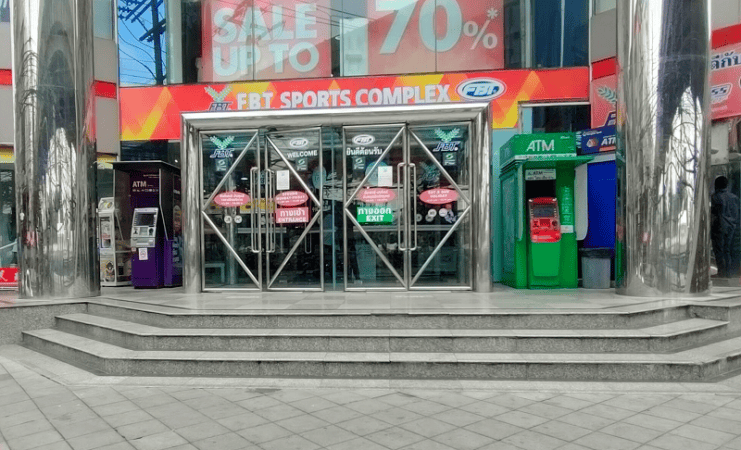
The more remote you are in Thailand, the harder it is to find an ATM. So, make sure to withdraw an adequate supply of cash before you enter these areas.
Google Maps is a good resource for finding ATMs in Thailand, but sometimes ATMs are removed without notice due to a lack of customers.
Lastly, if all else fails you can always ask a local Thai where the nearest ATM machine is, and they’ll gladly point you in the right direction. By the way, the word for ATM in Thailand is, you guessed it, ATM.
Thai ATM Cards
Some of the rules above may be different if you’re using your Thai ATM card. So, if you’re new to banking in Thailand or are considering moving here, the sections below should help you.
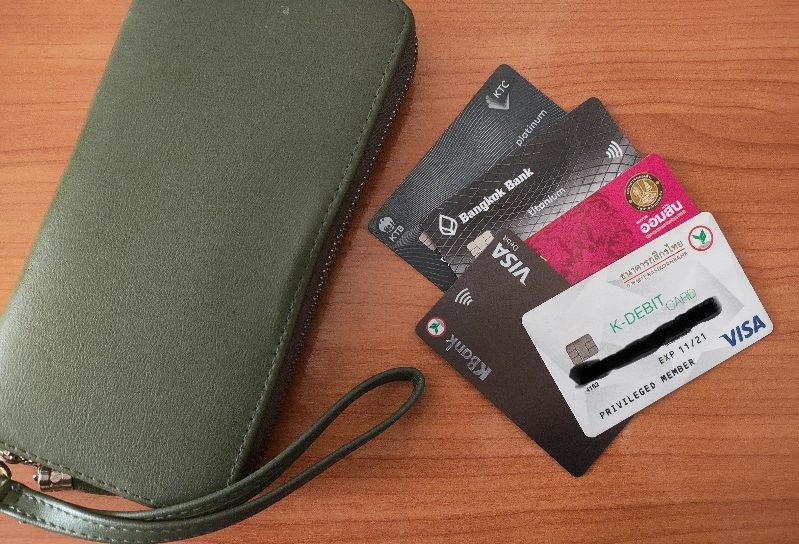
Opening a Bank Account
If you live in Thailand or plan to stay in the country long term, your best bet is to open a bank account in Thailand.
When you do this, you can then send money to your Thailand bank account and withdraw it here in the country. You could potentially save hundreds of dollars on inflated exchange rates and transfer fees — never mind the hefty ATMs fees.
Plus, you’ll get an ATM card that you can use for everyday life in Thailand.
Bank Withdrawal Limits
All banks in Thailand have different daily limits as seen in the below table. But similar to a bank in your home country, you can contact your Thai bank and ask them to increase your daily limit.
| Thai Bank | Daily Withdrawal Limit (Baht) |
| Citibank | 50,000 |
| Kungsri | 30,000 |
| Thai Military | 30,000 |
| CIMB Bank | 30,000 |
| Bangkok | 25,000 |
ATM Fees
If you use an ATM in Thailand that belongs to the bank that issued your ATM card, you won’t have to pay a withdrawal fee if the ATM is in your province.
Once you leave your province and use an ATM there, you’ll have to pay a 15 baht to 20 baht fee per withdrawal. Also, if you use your card in an ATM from another bank, you’ll be charged 10 baht to 20 baht per withdrawal.
The downside to having a Thai ATM card is that most of them can’t be used to buy things online or buy things when outside of the country, initially. To get these privileges, you have to go to the bank and set them up.
Lost or Stolen ATM Cards
If an ATM ate your card, you lost it, or it was stolen, then you’re in luck, because it’s very easy to replace.
Just call the bank, deactivate the card, then go to the bank and apply for a new one. They usually cost between 90 baht and 400 baht based on your card type.
Make sure you bring your passport or Thai driver’s license to help speed things along.
What Happens if an ATM Eats Your Card?
If an ATM eats your card, or if you left it behind by mistake, all is not lost.
During normal banking hours, you can go inside and ask them to remove your card. If the machine eats your card outside of normal operating hours, then you may have to go back the next day.
However, if you use an standalone ATM which isn’t connected to a bank, getting your card back may be more challenging, as you’ll have to call the number and speak to customer service — most likely in Thai.
In the event, for some reason, that you can’t recover your home country ATM card, you may have to call your bank, deactivate it, and request a new one. If you happen to be in Thailand on vacation, then you may as well have the bank send it to your home address.
If, however, you’re in Thailand long term and need your ATM card, you’ll have to request the bank to send it to your address in Thailand.
Withdrawing Money without an ATM Card
After you have a Thailand bank account, you don’t need to rely on your ATM card to withdraw cash anymore.
Instead, you can use your mobile banking app and head straight to the “withdraw” option.
Now, when you find yourself at an ATM, opt for “cardless withdrawal” feature. Then, open your mobile banking app and scan a QR code. That’s it.
Now, on to You
ATMs are easy to come by in Thailand, especially around the busier parts of big cities throughout the country. Just be sure to check that the ATM accepts your card before you put it inside, and you should be okay.
Also be mindful of ATM fees. If you know you’re going to need a certain amount of money over several days or weeks, withdraw it all at once instead of in smaller chunks, as this will save you money on at least the ATM withdrawal fees.
For additional Thailand finance tips, check out ExpatDen premium and get immediate access to these ExpatDen exclusive content:



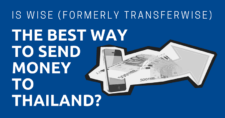
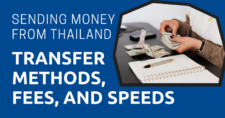


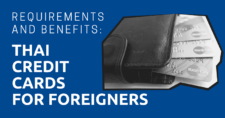
I inadvertently brought Bahamas dollars back from The Bahamas recently, but can’t find anywhere to change them to another currency. Is it possible?
AFAIK, I don’t know any bank or currency exchange service in Thailand that accepts it.
Thanks, Nick, for this thoroughly assessed and truly helpful information package. Very appreciated. 🙂
Thanks a lot for your comment Thomas. It’s really great to hear that you like the article!